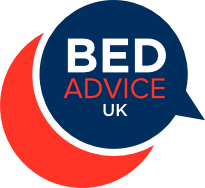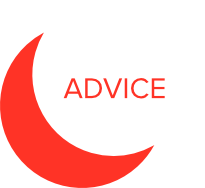
Bed and Mattress Advice for Children
How to choose a child’s bed
Why the right bed matters
Sleep is essential for your child’s physical and mental development. An uncomfortable or unsupportive bed can lead to restless nights, affecting their concentration, mood and even posture. Just as you wouldn’t let your child wear an ill-fitting pair of shoes, choosing the right bed ensures they get the support and comfort they need every night.
At what age should a child move from a cot to a bed?
The age at which a child is ready to move out of a cot into a bed varies but is generally between 18 months and three years.
Some children first move into a cot bed or smaller starter bed to help with the transition, while others go straight to a full-sized single bed. The key is ensuring the new bed provides a safe, comfortable sleep environment.
Bunk beds and child bed safety tips
If you’re considering a bunk bed or a themed bed, safety is paramount. Look for beds that meet UK safety standards (BS EN 747) that manufacturers and retailers should comply with.
Always ensure:
- The bunk is thoroughly stable.
- There are two guard rails on the upper bunk (*even if it’s going to be against a wall).
- Any ladder must be firmly secured.
- Catches and fixings are not accessible or prominent enough for small fingers to fiddle with.
- There are no gaps large enough for a child’s head to get stuck.
Children under six years are not advised to use the top bunk. Find more information on different types of bed bases in our Bed Buyers’ Guide.
How often should I change a child’s mattress?
Parents should aim to change the child’s bed and/or mattress at significant growth periods. This may require several bed changes – for example, a teenager who’s suddenly shot up to 6ft plus needs a bed that will enable his feet to stay on the mattress and not hang over the end! The right mattress is vital as it must provide the correct support for growing bones and muscles. That means sufficient support to hold the spine in correct alignment and sufficient comfort layers to cradle the body’s contours.
Choosing the right mattress for your child
The mattress construction can be either foam or sprung. A mattress and bedding with hypoallergenic fillings (i.e. avoiding known irritants such as feathers or hair) may be required for a child with asthma, eczema or rhinitis.
Mattresses containing memory foam are generally not recommended for young children. If your mattress is going to be used on a bedstead or base bought separately, always check that your choice is suitable for use with the type of bed base you have (slatted, mesh etc.).
Generally, a medium mattress is the most appropriate level of firmness for a child. A medium mattress allows the child to comfortably switch sleep positions and supports their pressure points. However, if your child is particularly light or heavy, they would be more suited to a softer or firmer one.
Secondhand beds: Should I accept one?
While it might be tempting to accept a secondhand mattress or buy one from a marketplace, don’t buy secondhand or use hand-me-down mattresses!
As well as obvious wear and tear from body weight, it is estimated that we lose around 280 ml (half a pint) of body moisture every night and shed around 0.45 kilos (1lb) of skin particles in a year. Apart from being a pretty unpleasant thought, this creates an ideal environment for allergens. It’s the perfect habitat for dust mites, which can aggravate both breathing and skin problems such as asthma and eczema. If you must opt for a secondhand mattress, ensure it meets safety standards and has been thoroughly cleaned.
Spotting low-quality mattresses
Bargain mattresses that seem “too good to be true” often are. Beware of sellers offering mattresses from the back of a van, as these may be old mattresses disguised under new covers. We strongly advise you to avoid online marketplaces, too. Always check for labels verifying compliance with UK fire safety regulations.
Taking care of your child’s mattress
A good mattress can last for years with proper care. To extend its lifespan:
- Use a washable mattress protector.
- Don’t allow your kids to jump on the bed – however tempting!
- Rotate and air the mattress regularly (follow the manufacturer’s care instructions).
- Clean spills immediately to prevent stains and moisture buildup.
Choosing the right bed and mattress for your child is an investment in their health and wellbeing. Prioritising quality, comfort and safety will ensure your child enjoys restful sleep throughout their growth stages. If in doubt, look for the National Bed Federation’s (NBF) Mark of Approval to ensure the mattress meets high industry standards.
By taking the time to choose wisely, you’re setting your child up for years of healthy, happy sleep!
Where can I go for children’s sleep advice?
Visit our partner, The Sleep Charity, for dedicated advice on children’s sleep, including helpful information on teen sleep.

